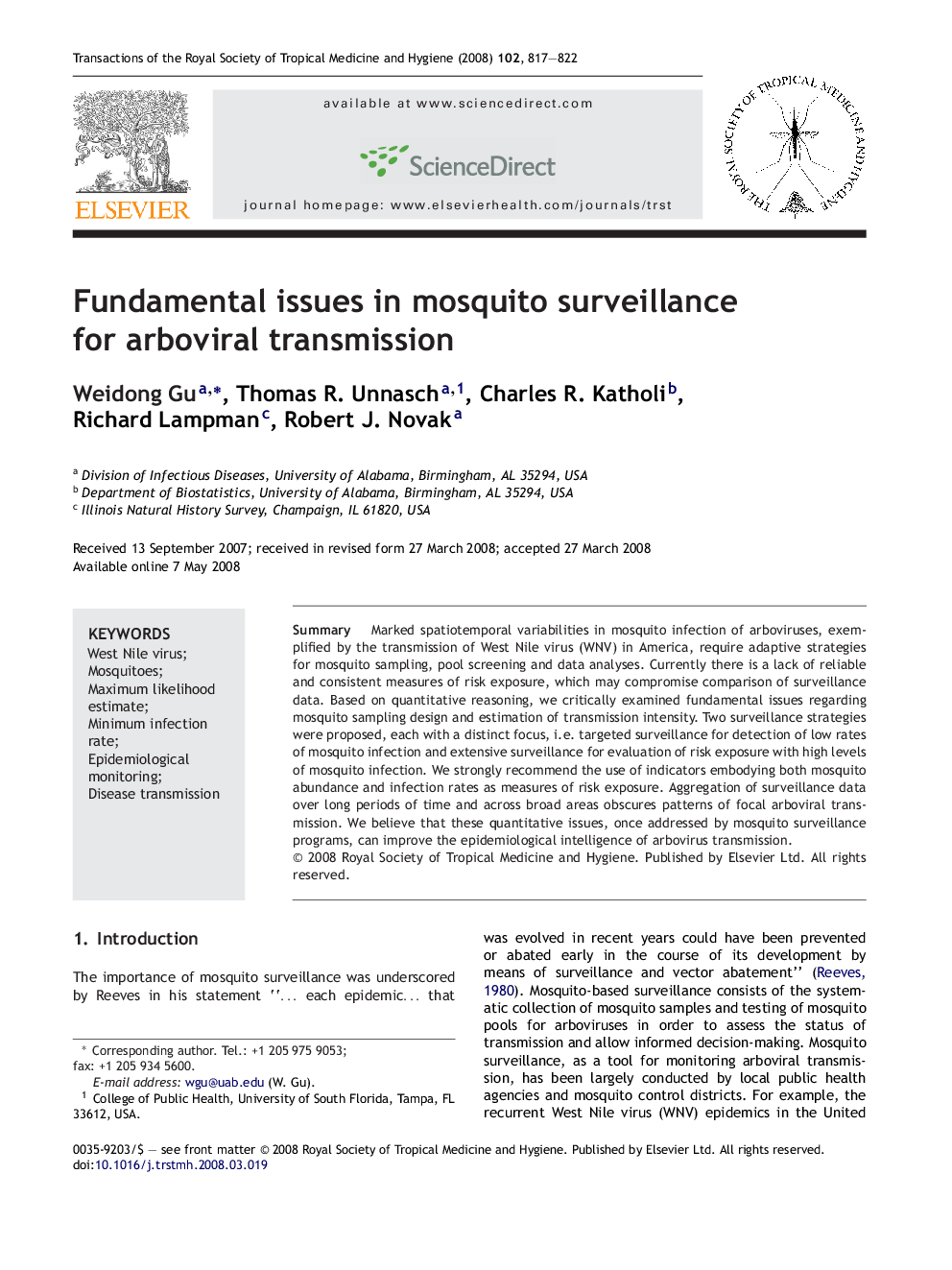| Article ID | Journal | Published Year | Pages | File Type |
|---|---|---|---|---|
| 3420797 | Transactions of the Royal Society of Tropical Medicine and Hygiene | 2008 | 6 Pages |
SummaryMarked spatiotemporal variabilities in mosquito infection of arboviruses, exemplified by the transmission of West Nile virus (WNV) in America, require adaptive strategies for mosquito sampling, pool screening and data analyses. Currently there is a lack of reliable and consistent measures of risk exposure, which may compromise comparison of surveillance data. Based on quantitative reasoning, we critically examined fundamental issues regarding mosquito sampling design and estimation of transmission intensity. Two surveillance strategies were proposed, each with a distinct focus, i.e. targeted surveillance for detection of low rates of mosquito infection and extensive surveillance for evaluation of risk exposure with high levels of mosquito infection. We strongly recommend the use of indicators embodying both mosquito abundance and infection rates as measures of risk exposure. Aggregation of surveillance data over long periods of time and across broad areas obscures patterns of focal arboviral transmission. We believe that these quantitative issues, once addressed by mosquito surveillance programs, can improve the epidemiological intelligence of arbovirus transmission.
